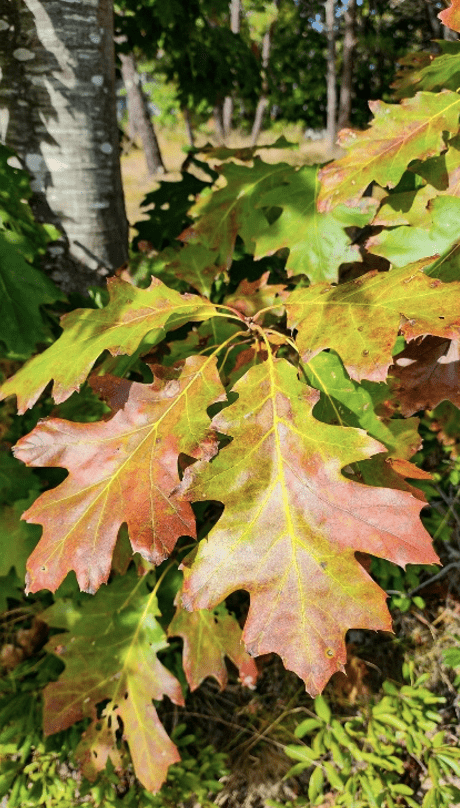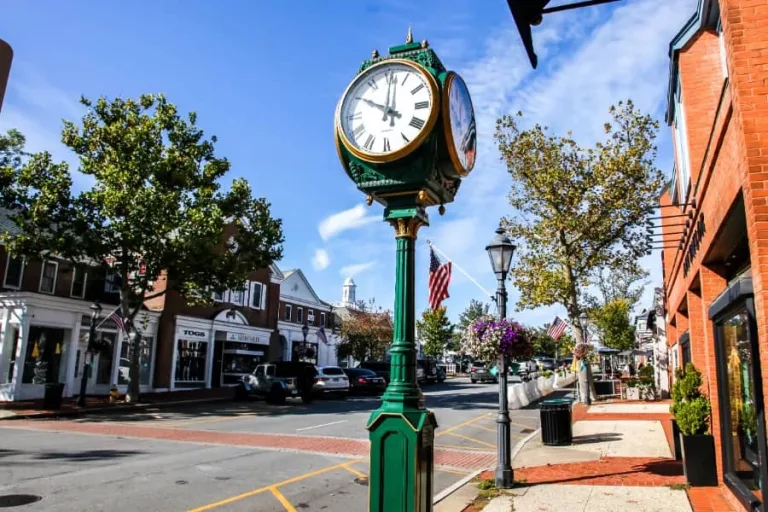By Frank Gallo
Pick a tree, any tree. But if you want to provide abundant caterpillars for migrating and nesting birds, pick an oak (Quercus). In Connecticut, there are 12 species of native oaks divided into two groups: white oaks, with round-lobed leaves and red/black oaks, with pointed lobes. As a group, oaks host the most caterpillars, an impressive 934 species. According to Doug Tallamay, co-author of The Living Landscape: Designing for Beauty and Biodiversity in the Home Garden, and numerous other publications on native landscape design, Oaks in the mid-Atlantic region alone support 557 species of caterpillars critical to the survival of birds and other wildlife. Similarly, native cherries (Prunus) host 456 caterpillar species, native willows (Salix) 455 species, and native maples (Acer) 280 species. Connecticut’s State Tree, the eastern white oak (Quercus alba), known locally as the Charter Oak, sustains as many as 436 species of caterpillars placing it among the top tree species integral to bird survival.
In addition to providing caterpillar food, oak flowers provide pollen and nectar, and their acorns are eaten by wildlife, including Blue Jays, Wild Turkeys, black bears, flying squirrels, gray squirrels, and white-tailed deer. Oaks are also important as shelter for Eastern Screech-Owls, Wood Ducks, woodpeckers, and many other hole-nesting and roosting species.

Although native oaks, cherries, and willows provide abundant caterpillars for birds, all native tree species are not created equal. For example, native tulip trees only support 21 species of caterpillars, and Yellowwood only one. Why? Well, there is chemical warfare at play. Plants produce chemicals to inhibit insects from eating them. Tulip trees and Yellowwood may produce such nasty toxins within their leaves that few insects can metabolize them. Over time, some insects adapt to these toxins, so plants then must modify their defensive chemicals, and around we go. But not every species can adapt to a given plant toxin, so there is frequent specialization where specific insects can feed only on specific plants, or a specific group of plants, such as oaks. This is true for a variety of butterflies that specialize on oaks such as banded hairstreak, white M hairstreak, red-spotted purple, and Juvenal’s duskywing.
Even though a few chemically well-protected native trees support fewer caterpillars, native species, on average, host thirteen times more caterpillars than non-native species! This concept carries through to native shrubs and wildflowers as well. Why is this important? Birds time their breeding to coincide with peak availability of caterpillars. During the nesting season, 96% of songbirds rely on caterpillars to feed themselves and their young. So, if your goal is to support local birds and other wildlife in your garden, native species are the optimal choice.

Additionally, natives are generally more cost-effective than non-natives. They are adapted to local conditions and can flourish with minimal care and without chemical intervention while providing wildlife with food and shelter and supporting a strong diversity of species. If, however, your native trees should suffer a rare severe pest infestation (such as invasive insects or diseases), consult an arborist. Remember that spraying insecticides during the breeding season will negatively impact birds and their ability to feed their young.
When designing your garden, even when using natives, choosing more productive species will make a significant difference in the amount of diversity one creates in your yard. Willows out preform maples, for example. Unlike native plants, non-native horticultural plants provide little insect food for birds, as local insects are not adapted to consuming them. They often also require more care and maintenance to survive.

Why is diversity important? Think about it like a balanced portfolio. Diversity provides stability and balance. Because caterpillars are often adapted to specific host trees, they may only be found on oaks, maples, or ash, and cannot survive on the leaves of other species. If disease decimates the caterpillars of one tree species, the caterpillars from other unaffected species will compensate. The same holds true for having a variety of native shrubs and wildflowers which provide food for native pollinators. Fortunately, birds eat a wide variety of caterpillars.
What happens if you plant these native trees, shrubs, and flowers, and bring all these bugs to your yard? Won’t they eat all your plants? Studies show that Carolina Chickadees, the smaller southern cousin to our Black-capped Chickadees, for example, feed their young more than 500 caterpillars per day for 18-20 days. That’s 10,000 caterpillars in 20 days, and that’s just one family of birds. Other bird species eat thousands of caterpillars each day, and there are likely dozens of birds raising broods in your neighborhood.
And, birds are not alone in consuming bugs. There are multitudes of insects, spiders, and other creatures that eat caterpillars. An insect-rich environment helps support a diverse, balanced, and aesthetically pleasing environment that will attract beautiful birds and other fascinating creatures to enjoy. To paraphrase the movie “Field of Dreams”, if you build diversity, they will come.

Local Native Plant Resources
Menunkatuck Audubon Society helped to establish the community run UrbanScapes Native Plant Nursery in New Haven, propagates more than 1500 native perennials from plugs and 400 native shrubs to sell each year at: https://menunkatuck.org/plants-for-sale.
For more information on gardening with natives see the Connecticut Botanical Societies’ Webpage: https://www.ct-botanical-society.org/gardening-with-natives/
The University of Connecticut offers lists of available native perennials, trees, and shrubs with links to local nurseries at: Conne https://ipm.cahnr.uconn.edu/connecticut-native-perennial-tree-and-shrub-availability-list/
Native Plant Trust is another good resource: https://www.nativeplanttrust.org/for-your-garden/buy-native-plants-new/
Earth Tones Native Plants in Woodbury has a nice variety of natives. https://www.earthtonesnatives.com/
Bringing Nature Home: How You Can Sustain Wildlife with Native Plants by Doug Tallamy is another good resource.
Frank Gallo is the Senior Naturalist at the New Canaan Nature Center located at 144 Oenoke Ridge, and the author of Birding in Connecticut – a comprehensive site guide. He can be reached at Fgallo@newcanaannature.org by email. For more on the New Canaan Nature Center, visit NewCanaanNature.org online.



